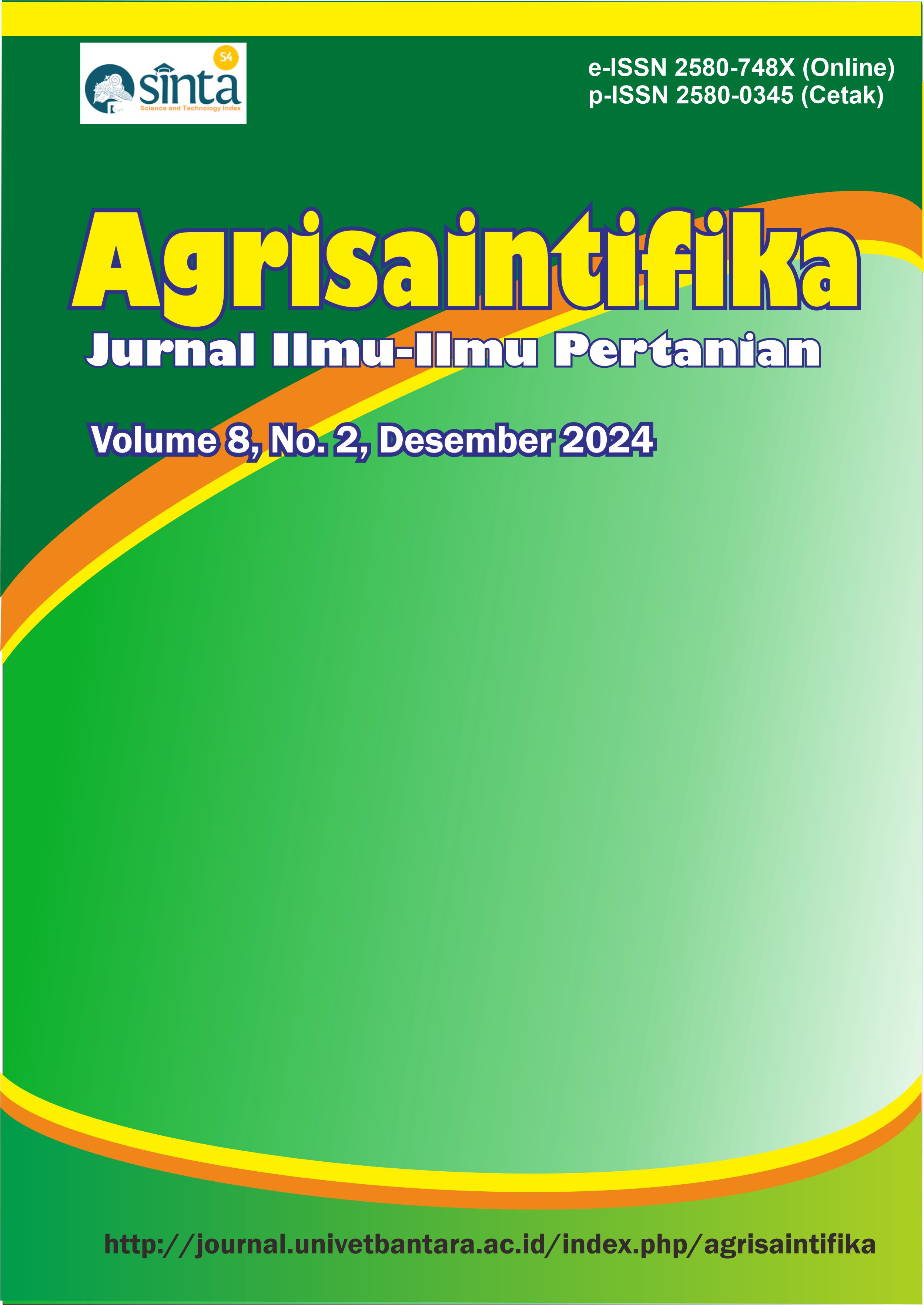FOOD SUPPLY CHAIN NETWORK ANALYSIS OF SMALLHOLDER PALM OIL IN LANGKAT REGENCY
DOI:
https://doi.org/10.32585/ags.v8i2.5835Abstract
The oil palm plantation business in North Sumatra is the oldest and oldest oil palm agribusiness activity in Indonesia. However, there are still problems with palm oil commodities in North Sumatra, especially Langkat Regency. In the FFB marketing aspect, obstacles are faced, such as fluctuations in FFB prices at the farmer level and the length of trading channels that farmers have to go through before they reach the factory. This research aims to analyze the smallholder oil palm supply chain in Langkat Regency. The research was carried out in May - August 2024. The research used primary and secondary data. Determining respondents used non-probability sampling, namely the purposive sampling method for farmers with a total of 73 people and snowball sampling for trading institutions. The data analysis used is the food supply chain network (FSCN) to describe research descriptively based on the results of interviews with business actors, observations and checking documentation. The research results show that supply chain management has clear chain targets and structured chain members. There are two flow patterns in the smallholder oil palm supply chain in Langkat Regency. The flow pattern of the supply chain I: farmer – middleman – ramp – palm oil mill and the flow pattern of the supply chain II: farmer – middleman – palm oil mill. Analysis of marketing margins and farmers' share, it shows that the smallholder oil palm supply chain in channel II is more efficient than channel I because it has the lowest margin and the highest farmers' share
Downloads
Downloads
Published
How to Cite
Issue
Section
License
Copyright (c) 2024 Tifany Zia Aznur, M. Fariz Afif Hasibuan, Ritna Wahyuni, Henrico Ginting

This work is licensed under a Creative Commons Attribution-ShareAlike 4.0 International License.




